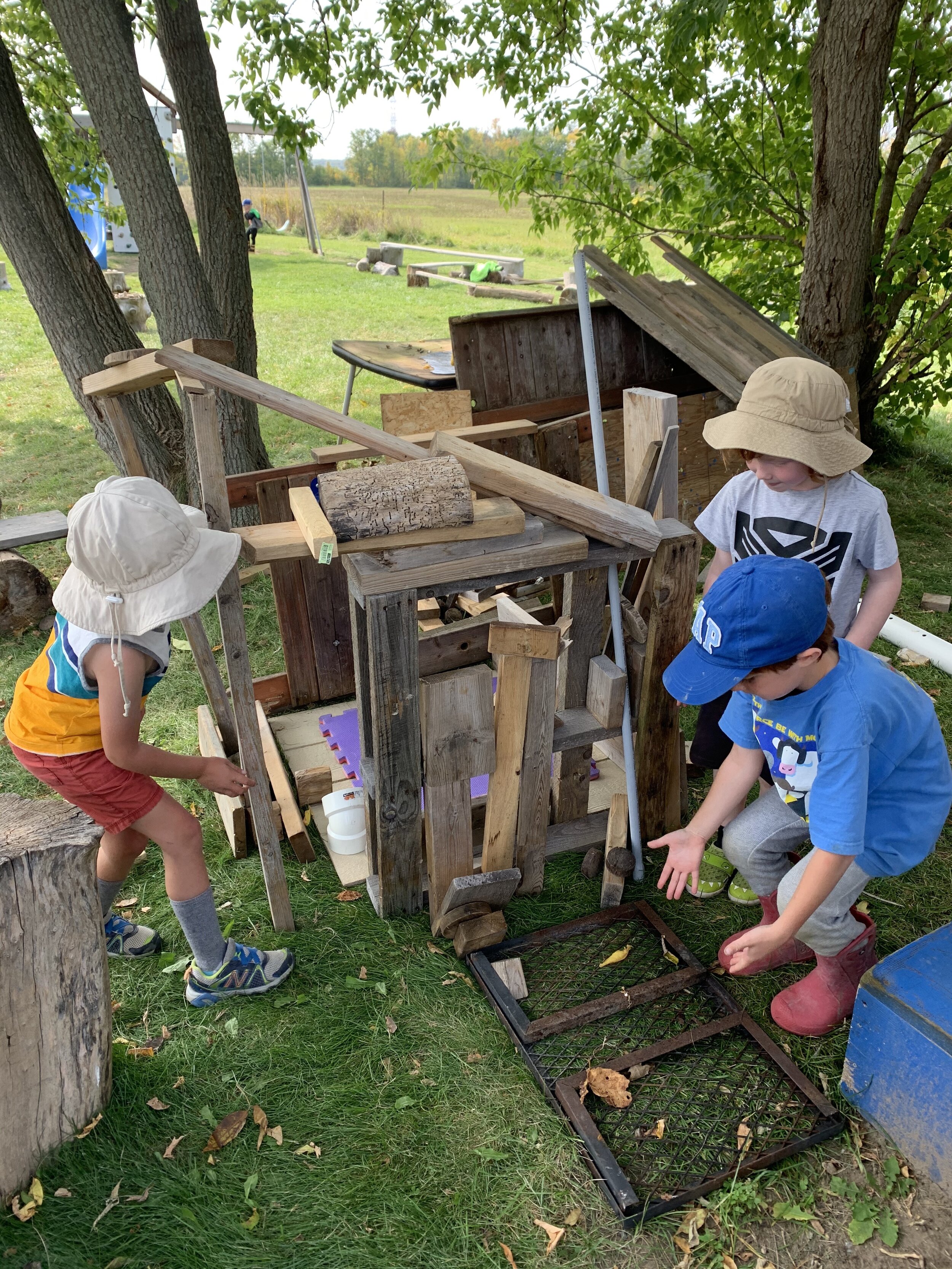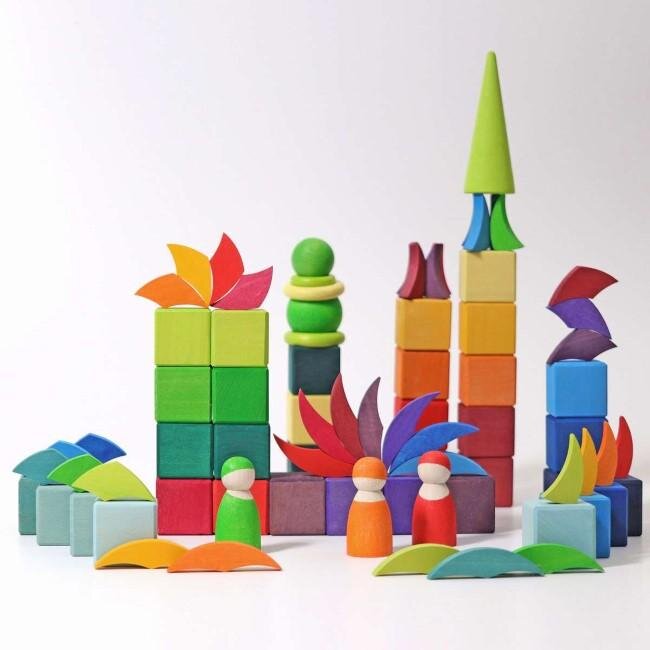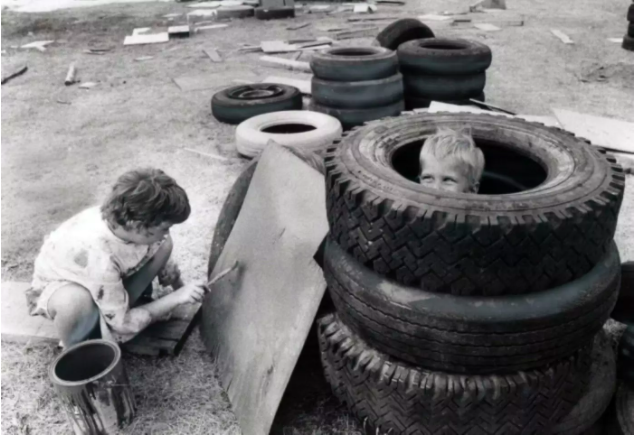If you’re one of those parents or teachers, who, like me want it all neat and tidy, I encourage you to keep reading. You likely have shelves full of beautifully organized and labelled bins in which are a wealth of amazing loose parts materials for STEM activities, tinker trays, makers spaces, and all the other open-ended play concepts that are so valuable to early childhood development. We take them out, make an organized mess, while channelling and embracing the myriad of Pinterest quotes that have us believing that we are doing it right:
“Creativity and learning is messy. Embrace the discomfort”
“Messy classroom are where the magic happens”
“Sorry about the mess, but we are learning here”
When the activity comes to its natural conclusion we then promptly clean it up, returning all of the various parts and pieces back to those carefully marked bins, which then go back to their specific spot on the shelf. Being truthful and completely honest, I have and continue to be this teacher, and it’s difficult, and I mean DIFFICULT to change.
This is the structure of most classrooms and most household playrooms. Female ECEs, teachers, and mothers continue to dominate the landscape and environment of early childhood learning, and whether we like it or not, want to admit it or not, this type of organization is largely a feminine trait (of course with exceptions on both sides) and is one of a few key contributing factors to the feminization of primary education (see more in Boys Adrift by Leonard Sax).
Let’s be clear, I am in no way saying there isn’t a place for this in teaching and in learning. There is undoubtedly great value packed into those bins. They have their place. Those fantastically organized loose part bins still develop creativity, ingenuity, problem solving, and communication among many others skills. But, and here is the BUT - while they facilitate open-ended play without a clear, pre-determined outcome, they are nonetheless predictable, safe, and easy to manipulate.
Enter stuff.
All kinds of STUFF.
The kind of STUFF that fills your garage, your shed, your attic and then eventually goes to the dump. Trash to us, treasure to children. The kind of STUFF that I hate to keep. The kind of STUFF I hate to look at. It’s debris, it’s junk, it’s by no way aesthetically pleasing, and however hard you try, it’s impossible to organize!
But what I have seen and learned from this STUFF, this junk, this debris is the immense benefit it has on the development and acquisition of skills, and in turn, I have developed a realization that I must continue to grow and change as an educator. I am fortunate to have students and a colleague that have helped me discover this, as I attempt to embrace the STUFF.
Unlike many Montessori and Waldorf loose part sets (ex. rainbow stackers, anything Grimm’s or Grapat) these “junk” parts and pieces are unpredictable, they lack uniformity in size, shape, texture, weight, angle, edges (the list goes on and on) and therefore require greater critical thinking, problem solving, communicating, and synthesizing of information within children. Yet, inherent to the loose part pieces and sets that are purchased online and in stores (for a crazy price I must add) are familiarity and predictability. When those conditions are removed, children are faced with unexpected challenges, complex problems which they must solve with other STUFF; other STUFF that is similarly challenging and STUFF that, more often than not, results in the addition of even more variables to the puzzle they seek to solve as they imagine, construct, play, and create. When the problems are complex and so too are the answers, the learning is deeper, the skill acquisition stronger. This is what we want for our children, for our students. This is what our children, what our students need. And, like many concepts related to child development, education, and learning (enter forest and outdoor schools into the conversation) it isn’t new, and has a long history of being successfully adopted outside of North America.
The “Adventure Playground”, otherwise known as the “Junk Playground” dates back to 1943 Nazi occupied Copenhagen, and since then has been adopted and embraced by much of the world, particularly in Europe. The United Kingdom has gone so far as to establish a professional methodology entitled “playwork” in which adults are trained to run these environments, and these environments are plentiful. Despite their popularity and success around the globe, they simply haven’t taken off in North America as we continue to be plagued by our rising, superfluous fears surrounding child safety and our corresponding need for adult-directed activities in carefully controlled environments. In the 1970s New York City had at least three Adventure Playgrounds, and now has only one (https://www.play-ground.nyc) and even closer to home, from 1974 to the mid 1980s Toronto had its own Adventure Playground located at the foot of Bathurst Street on the grounds of Harbourfront.
Children “were given hammers, nails, saws, assorted tools, metal shovels, and unlimited amounts of lumber to go hog-wild constructing buildings, bridges, forts, houses, dog houses, and whatever else they desired. There was a garden, a fire-pit, and a water supply. It was a mini-civilization, a shanty town on Bathurst — devised, designed, constructed and lorded over by kids. Children [built] amazing structures restricted only by their own imagination.”
Such a place is simply unimaginable in today’s overprotective, hyper-controlled climate of parenting and child rearing, and while injuries were undoubtedly common and plentiful, it was accepted as part of the experience, something many of us can connect with from our own childhoods.
SO…
Let’s let go of adult-directed, hyper-controlled, overly predictable environments, and go back to something that more closely resembles the childhoods that we remember.
Let’s adopt, accept, and embrace junk, debris, and trash.
Let’s let go of valuing the aesthetic that has come to dominate backyards, classrooms, and playrooms. Those Pinterest and Etsy inspired spaces that are meticulously planned, carefully crafted, and perfectly organized.
Let’s adopt, accept, and embrace the perfectly imperfect STUFF.
I am working at it, you should too :)
Further Reading:
Boys Adrift: The Five Factors Driving the Growing Epidemic of Unmotivated Boys and Underachieving Young Men. Leonard Sax. 2007. Basic Books, Perseus Books Group.
The Junk Playground of New York City: Where children tinker with saws and hammers while parents stand on the sidelines https://www.theatlantic.com/education/archive/2016/08/the-junk-playground-of-new-york-city/495371/
Toronto Once Had The Best Playground Ever https://www.blogto.com/city/2017/09/adventure-playground-toronto-history/













